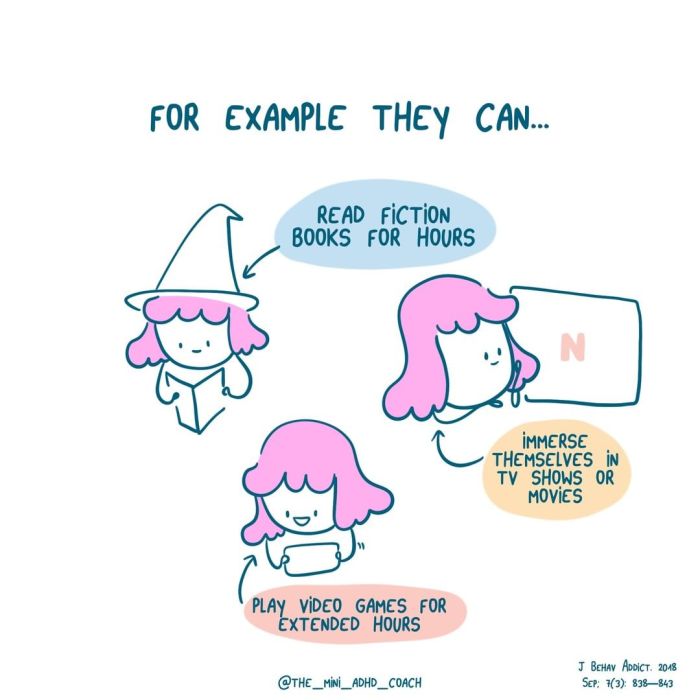Daydreaming and fatigue are examples of – Daydreaming and fatigue are common experiences that can significantly impact our daily lives. Understanding the causes and effects of these phenomena is crucial for managing their impact and promoting well-being. This article delves into the psychological and physiological mechanisms underlying daydreaming and fatigue, exploring their consequences and providing strategies for managing these experiences effectively.
Daydreaming, characterized by vivid mental imagery and a detachment from external stimuli, is often associated with boredom, anxiety, and stress. Neurobiological research suggests that daydreaming involves the activation of the default mode network, a set of brain regions that become active when we are not engaged in specific tasks.
Introduction

Daydreaming and fatigue are common experiences that can have a significant impact on our daily lives. Daydreaming is a state of mind in which we become lost in our thoughts and fantasies, while fatigue is a state of physical and mental exhaustion.
This article will analyze the causes and effects of daydreaming and fatigue, and provide strategies for managing these experiences.
Causes of Daydreaming

Daydreaming can be caused by a variety of psychological factors, including:
- Boredom
- Anxiety
- Stress
- Loneliness
- Depression
Daydreaming can also be triggered by certain situations or activities, such as:
- Being in a monotonous or boring environment
- Feeling overwhelmed or stressed
- Being alone or isolated
- Engaging in repetitive or mindless tasks
Effects of Daydreaming
Daydreaming can have both positive and negative effects.
Positive Effects
- Creativity
- Problem-solving
- Stress relief
- Emotional regulation
Negative Effects, Daydreaming and fatigue are examples of
- Decreased productivity
- Social isolation
- Difficulty concentrating
- Impaired decision-making
Causes of Fatigue: Daydreaming And Fatigue Are Examples Of
Fatigue can be caused by a variety of physiological and psychological factors, including:
Physiological Factors
- Lack of sleep
- Physical exertion
- Illness
- Chronic pain
- Medications
Psychological Factors
- Stress
- Anxiety
- Depression
- Boredom
- Loneliness
Effects of Fatigue

Fatigue can have a significant impact on our physical and mental health.
Negative Effects, Daydreaming and fatigue are examples of
- Decreased productivity
- Impaired judgment
- Increased risk of accidents
- Difficulty concentrating
- Irritability
- Mood swings
- Increased risk of chronic health conditions
Strategies for Managing Daydreaming and Fatigue

There are a number of strategies that can be used to manage daydreaming and fatigue.
Strategies for Reducing Daydreaming
- Mindfulness
- Meditation
- Exercise
- Cognitive-behavioral therapy
Strategies for Managing Fatigue
- Getting enough sleep
- Eating a healthy diet
- Exercising regularly
- Managing stress
- Seeking medical help if necessary
Popular Questions
What are some common causes of daydreaming?
Daydreaming can be triggered by boredom, anxiety, stress, and a lack of mental stimulation.
What are the potential benefits of daydreaming?
Daydreaming can foster creativity, problem-solving abilities, and emotional regulation.
What are some effective strategies for managing fatigue?
Getting enough sleep, eating a healthy diet, exercising regularly, and managing stress can help reduce fatigue.
